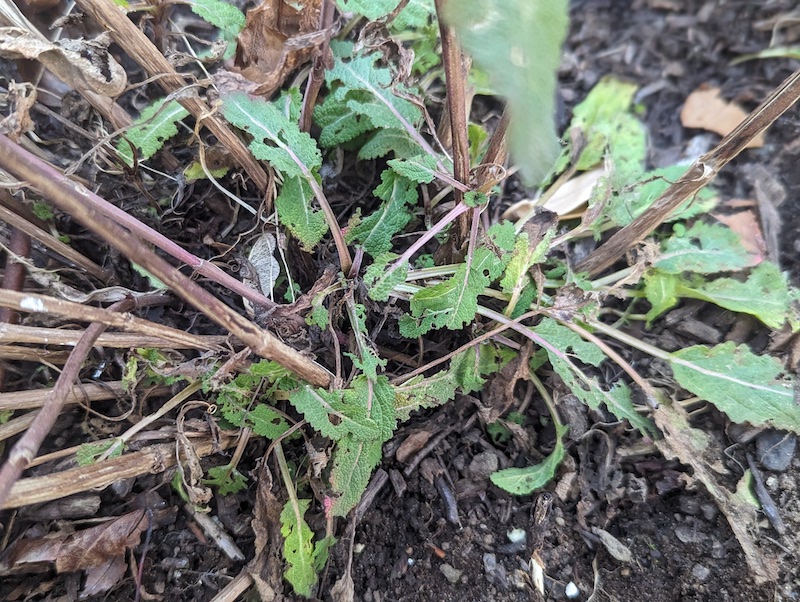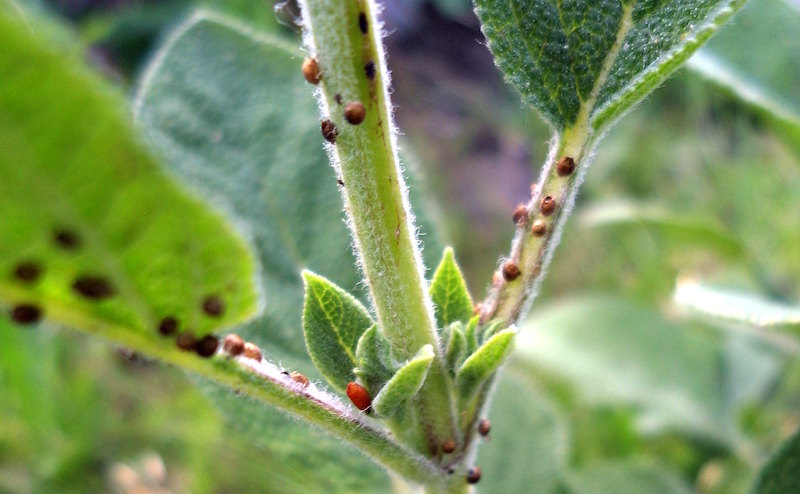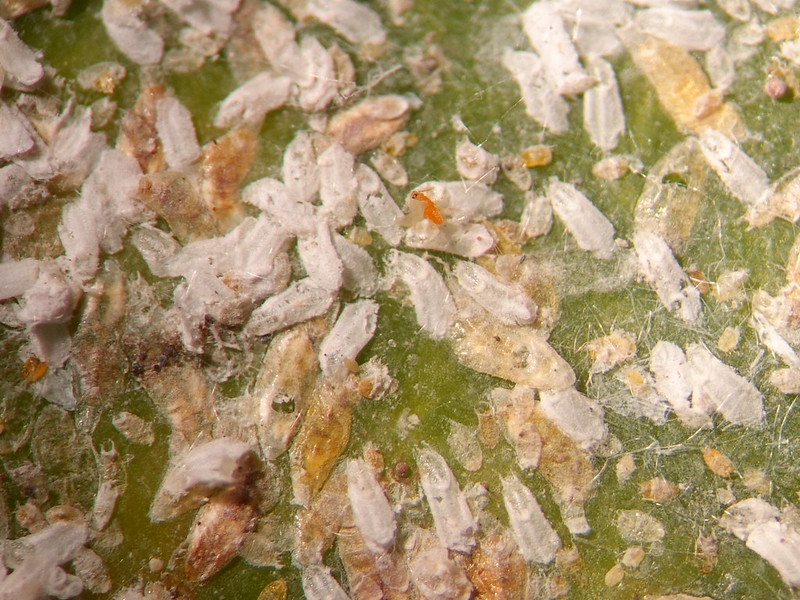Salvia is a low-maintenance plant with tiny, tubular flowers that grow on tall stems. This pollinator favorite is adaptable but grows best in full sun and is drought tolerant once established. Pests are not often a problem for salvia, but some insects can damage this plant, marring its appearance and impacting its health. Learning to spot the signs of infestation can prevent or minimize damage from bugs.

Common Salvia Pests
Aphids
Aphids are tiny, sap-sucking bugs that cause leaf damage. Aphids appear as small yellowish-green bugs and often hang out on the underside of the leaves. Foliage curls become misshapen or turn yellow after aphids have fed on the plant. A healthy salvia needs leaves to collect sunlight for photosynthesis. Damaged leaves cannot collect as much sunlight as the plant potentially needs, resulting in stunted growth, and a worst-case scenario, plant death.

Photo by Christoph Zurnieden, cropped, Flickr, Copyright CC BY 2.0 DEED
Treating Aphids on Salvia
Treat salvia plants infested with aphids at the first sign of damage. If left alone, these pests will continue to feed on the plant and lay more eggs, creating generations of bugs. Spray the plant with insecticidal soap or create a solution of water mixed with a few drops of dish soap to treat the plant. Spray the entire plant, including under the leaves, and be prepared for several rounds of treatment. Prune stems with severe infestation and destroy the cuttings to prevent further spread.
Preventing Aphids on Salvia
To prevent aphids on salvia, position salvia in full sun and avoid fertilizing it. Too much nitrogen can promote an abundance of tender growth, which attracts aphids. Avoid overwatering salvia, which can weaken the plant and leave it vulnerable to pests. Proactively spray the plant with insecticidal soap or dilute dish soap in water if you have struggled with aphids in the past or if nearby plants show signs of damage.
Spider Mites
Spider mites are another type of sapsucker. A spider mite infestation appears as yellow or brown spots on foliage that eventually cause the leaf to die. Delicate webs between leaves and stems may indicate a spider mite infestation. Spider mite damage kills leaves, which stunts growth and can kill the plant in an extreme infestation.
Treating Spider Mites on Salvia
Spray a salvia plant infested with spider mites with a garden hose to forcefully remove the pests from the plant. Treat spider mites by spraying the salvia with insecticidal soap or a mixture of water with a few drops of dish soap. Remove growth with heavy spider mite damage so the plant can direct its energy into new growth.
Preventing Spider Mites on Salvia
Prevent spider mites by providing salvia the right growing conditions to keep it healthy. Inspect the plant for damage to catch an infestation as soon as possible. Spray the plant with an insecticidal soap as a preventative measure. Consider treating all the plants in a garden bed if you notice signs of spider mites to contain the infestation.
Whiteflies
Whiteflies are tiny flying insects with white bodies and are related to aphids. Like aphids, whiteflies suck sap from plants, removing nutrients and slowly killing the plant. Whitefly damage looks like yellow spots or dying foliage. The small white insects may be visible on the plant, especially underneath the leaves. Whitefly waste, known as honeydew, is another sign of a whitefly infestation on salvia plants. The honeydew can turn into black sooty mold.

Photo by Scot Nelson
Treating Whiteflies on Salvia
Dousing a plant in insecticidal soap is the most effective treatment of whiteflies. Rain or heavy dew can rinse the treatment from the plant, so plan to spray several times to ensure all of the adults, larvae, and eggs are treated and killed.
Preventing Whiteflies on Salvia
Early identification and treatment are the closest thing to whitefly prevention. Inspect your plants for dead or damaged leaves, or pests on the plant. Make sure to look on the bottom side of leaves for signs of whiteflies. Spray the plants with insecticidal soap to keep whiteflies away and kill any eggs that may be on the salvia plants.
Salvia Pests Chart
|
Pest |
Identifying |
Treating |
|
Aphids |
Small yellowish-green bugs |
Spray the plant with insecticidal soap or create a solution of water mixed with a few drops of dish soap |
|
Spider Mites |
Appears as yellow or brown spots on foliage |
Spray the plant with insecticidal soap or create a solution of water mixed with a few drops of dish soap |
|
Whiteflies |
Tiny flying insects with white bodies |
Douse the plant with insecticidal soap |
Sources:
"Salvia." Clemson University Cooperative Extension Service. hgic.clemson.edu
"Salvia." North Carolina Extension Gardener Plant Toolbox. plants.ces.ncsu.edu
 |
Author Alison Cotsonas - Published 11-16-2023 |
